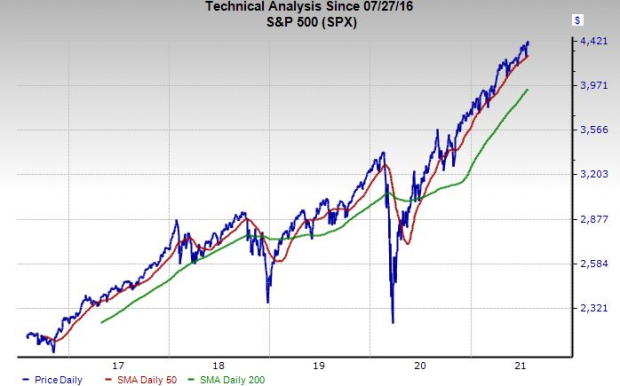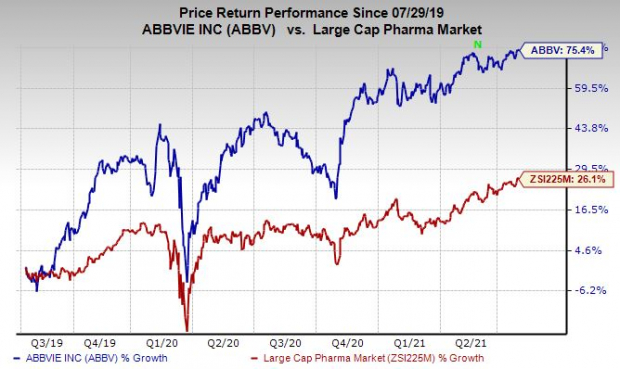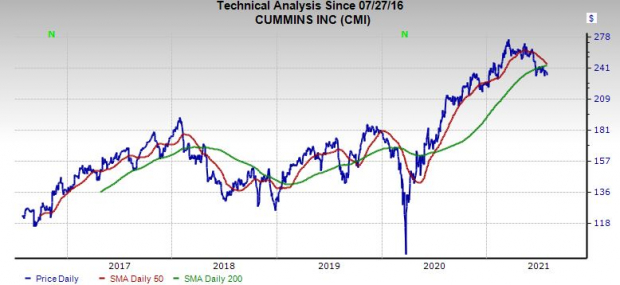Stocks slipped from their records through mid-afternoon trading on Tuesday. The Nasdaq was down 2%, while the S&P 500 had slipped 1%, and the Dow dipped 0.70%. The downturn followed five sessions of gains that pushed all the major U.S. indexes to new highs almost as quickly as they fell from their last round of records on July 12.
The last pullback was blamed on delta coronavirus worries and economic slowdown fears, which remained in place as stocks regained momentum. Those same fears are being cited as culprits for Tuesday’s slump. But the recent declines have also occurred as many of the largest technology stocks reach some overheated technical levels. And let’s remember Wall Street is going to take winnings off the table often.
Therefore, the current selling could continue even if we see strong reports from tech titans such as Amazon
AMZN
, Apple
AAPL
, Microsoft
MSFT
, and countless others this week. In fact, Wall Street might use a strong earnings season as a chance to sell stocks only to buy them back at more enticing levels later (also read:
Big Tech Earnings Preview: Apple, Amazon and Other Market Movers
).
Inventors with longer-term outlooks should block out the noise and understand corrections and pullback are healthy aspects of even the strongest bull markets. Despite concerns about rising prices and other economic slowdown fears, the U.S. economy appears poised for strong growth over the next few years and the S&P 500 earnings picture supports this view.
Even when the Fed finally starts to raise rates off their rock-bottom levels, rates will likely remain historically low for years. Therefore, investors might want to add strong dividend-paying stocks to boost their portfolios. Today, we dive into two blue chip stocks that investors might want to consider buying as they report Q2 earnings.

Image Source: Zacks Investment Research
AbbVie
ABBV
Results on Friday, July 30
AbbVie is prepared for a bright future even as patent protections run out for one of the world’s best-selling drugs, Humira—biosimilars are available outside of the U.S., with domestic competition to start in 2023. AbbVie readied itself for a post-Humira world, in part, through its $63 billion purchase of Allergan last May.
ABBV’s deal brought Botox and other popular drugs into a diversified medicine cabinet that includes immunology, oncology, neuroscience, a strong R&D pipeline, and much more. CEO Richard Gonzalez said last quarter that it’s “on the cusp of potential commercial approvals for more than a dozen new products or indications over the next two years–including five expected approvals in 2021.”

Image Source: Zacks Investment Research
ABBV’s FY20 revenue surged 38%, driven by its Allergan deal. It then beat Q1 estimates and raised guidance on strength across its core therapeutic areas. Zacks estimates call for the firm’s 2021 revenue to surge over 22%, with FY22 set to climb another 7% higher to $60 billion. Meanwhile, its adjusted earnings are projected to jump 20% and 11%, respectively.
AbbVie’s EPS outlook turned more positive following its Q1 release and it’s grabbed some upward revisions for Q2 in the last seven days. The stocks that currently lands a Zacks Rank #3 (Hold) boasts a strong history of quarterly earnings beats. ABBV also lands “A” grades for Growth and Value in our Style Score system, alongside a “B” for Momentum.
ABBV’s outlook is clearly strong, yet some of its other fundamentals captured Warren Buffett and Berkshire Hathaway’s attention last year. The firm has raised its dividend by 225% since its inception in 2013. Its $1.30 a share quarterly dividend yields 4.41% at the moment to blow away its industry’s 2.55% average, as well as the 30-year U.S. Treasury’s 1.92%, and the S&P 500’s 1.28%. This impressive payout could help boost any diversified portfolio and provide some nice protection from inflation.

Image Source: Zacks Investment Research
The dividend yield is more impressive since ABBV shares are up 85% in the past five years to roughly double the Large Cap Pharma space. This run includes a 75% jump in the past 24 months. The stock has popped by 10% in 2021 and it’s found support around its 50-day moving average this year. At around $118 a share, ABBV trades right near its new highs heading into its release. Despite its current levels, the stock sits below overbought RSI levels (70) at 60.
On top of that, AbbVie trades at a substantial discount to its peers at 8.8X forward 12-month earnings vs. 15.1X, which also marks value to its own year-long highs. Wall Street appears high on the stock, with nine of the 13 brokerage recommendations Zacks has at “Strong Buys,” with one more “Buy,” and three “Holds.”
Cummins
CMI
Results on Tuesday, August 3
Cummins shares have cooled down since they climbed to records in early March. The industrial titan benefitted from economic boom-based buying, as well as a wave of infrastructure spending speculation that boosted Caterpillar
CAT
and countless others. Even as cyclical stocks lose some steam and U.S. infrastructure spending remains up in the air, CMI appears to be a solid long-term play that investors can scoop up at a discount.
Cummins manufactures engines of all shapes and sizes including diesel, natural gas, electric, and hybrid powertrains. CMI also makes air handling systems, electric power generation systems, batteries, electrified power systems, hydrogen generation, and other power solutions. Wall Street has more recently focused some of its attention on the historic American company’s ability to benefit from and help drive a cleaner energy future, including hydrogen fuel cell tech.

Image Source: Zacks Investment Research
CMI and more niche green energy firms have gained traction in what has turned into a widely popular area within the renewable energy sector that could gain more steam. Cummins currently “uses fuel cell and hydrogen technologies to power a variety of applications, including transit buses, semi-trucks, delivery trucks, and passenger trains to name a few.”
CMI is committed to evolving as every major automaker from Ford
F
to Volkswagen race to catch up to Tesla
TSLA
in the EV space. Overall, it appears cleaner energy represents the future of transportation. Cummins said earlier this month that it began testing a hydrogen-fueled internal combustion engine in order to take “another step forward in advancing zero carbon technology.” The firm then announced a “strategic collaboration on hydrogen” with Chevron.
Cummins beat Q1 estimates, with revenue up 22% against the easy-to-compare period. Management raised fiscal 2021 guidance, citing “stronger demand across all markets.” Zacks estimates call for CMI’s FY21 revenue to surge 24% to $24.5 billion to see it climb above its pre-covid total in FY19. The firm’s sales are then expected to jump another 7% higher in 2022. Meanwhile, its adjusted EPS are projected to climb 35% this year and over 16% higher in FY22.
The firm boasts a strong history of bottom-line beats, including a 54% average beat in the trailing four quarters. CMI has also seen its longer-term consensus EPS estimates climb since its Q1 release. Like ABBV, Cummins grabs a Zacks Rank #3 (Hold) at the moment along with some high marks in our Style Scores system. In fact, CMI lands “A” grades across the board for Value, Growth, and Momentum.
Cummins on July 13 announced that it raised its quarterly dividend by 7% to $1.45 a share. The next dividend is payable on September 2 to shareholders of record on August 20, with the new payout representing a 2.49% yield, which easily tops the 10-year and 30-year U.S. Treasury and its industry’s 0.36% average. Investors should be happy to know CMI has now boosted its dividend 12 years in a row and executives said it plans to return 75% of operating cash to shareholders in the form of dividends and buybacks in 2021, up from last year’s 52%.

Image Source: Zacks Investment Research
CMI shares have climbed 92% in the last five years to inch by its Zacks Econ Sector, including a 70% run in the trailing 36 months. As we mentioned at the top, Cummins has cooled down, up only 3% in 2021. At $234 a share, the stock trades 15% below its mid-March records. The downturn has pushed CMI below its 50-day and 200-day moving averages, where it’s rarely stayed for long in the last three years.
Cummins is also nearing oversold RSI (30) levels at 37 and it trades at a 25% discount to its own year-long median and 37% below its highs at 13.7X forward 12-month earnings. This represents a strong discount to its sector’s 20.8X average as well, despite its longer-term outperformance.
All that said, some investors might want to wait for signs of a turnaround, while those with longer horizons could take a chance before earnings. And it’s worth noting that six of the 16 brokerage recommendations Zacks has are “Strong Buys,” with the other 10 at “Holds.”
+1,500% Growth: One of 2021’s Most Exciting Investment Opportunities
In addition to the stocks you read about above, would you like to see Zacks’ top picks to capitalize on the Internet of Things (IoT)? It is one of the fastest-growing technologies in history, with an estimated 77 billion devices to be connected by 2025. That works out to 127 new devices per second.
Zacks has released a special report to help you capitalize on the Internet of Things’s exponential growth. It reveals 4 under-the-radar stocks that could be some of the most profitable holdings in your portfolio in 2021 and beyond.
Click here to download this report FREE >>
Want the latest recommendations from Zacks Investment Research? Today, you can download 7 Best Stocks for the Next 30 Days.
Click to get this free report


